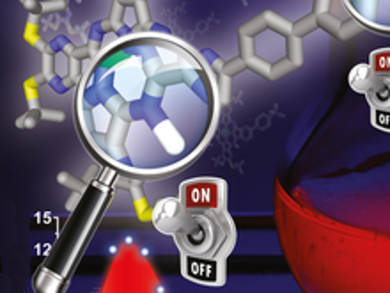Electrochemical sensors are well-established and widely used for pH measurements. However, they still have some disadvantages, such as the need for frequent calibration and sensitivity to electrical interference. As an alternative, optical sensors use the reversible changes on spectroscopic properties of indicators induced by pH, which makes them ideal for field applications.
Victor N. Nemykin, University of Minnesota, Duluth, USA, and University of Manitoba, Winnipeg, Canada, Petr Zimcik and Veronika Novakova, Charles University, Prague, Czech Republic, and colleagues developed pH-sensitive red-emitting fluorescent probes based on tetrapyrazinoporphyrazines (TPyzPzs).
The researchers were able to tune the fluorescence intensity of TPyzPzs through the basicity of two nitrogen atoms, which act as “switches”. The first switch is in the backbone of TPyzPzs and the second one is in the peripheral group. When both switches are “on”, the high fluorescence intensity is high, and this state occurs only at a narrow pH range (pH 1–2.5). Below pH 1 and above pH 2.5, the system is considered “off”. The team also showed that depending on the peripheral group, different “on/off” mechanisms could be exploited. The developed compounds show promise as possible candidates for fluorescence-based pH-sensor devices.
- OFF-ON-OFF Red-Emitting Fluorescent Indicators for a Narrow pH Window,
Antonin Cidlina, Miroslav Miletin, Mahtab Fathi-Rasekh, Victor N. Nemykin, Petr Zimcik, Veronika Novakova,
Chem. Eur. J. 2016.
DOI: 10.1002/chem.201604978



